Gift Card Balance
Enter the code below to redeem your gift card

Crassula ovata, or Jade plant, is a popular and unique houseplant that thrives in dry conditions and has minimal watering requirements. With thick, fleshy, oval-shaped leaves on a sturdy stem, this succulent botanical wonder from Africa is relatively easy to care for, making it perfect for both beginners and experienced plant lovers. This simple yet detailed guide will take you through the optimal Crassula ovata care routine, including its best watering schedule, sunlight needs, soil requirements, and more.
So, let’s get started, and learn more about how to care for your Jade plant.

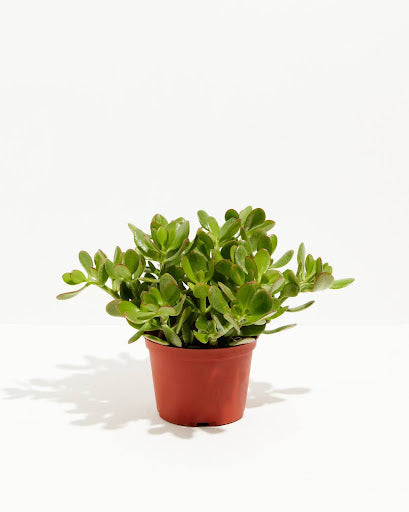
Scientifically known as Crassula ovata, a Jade plant is a gorgeous succulent with fleshy, oval-shaped leaves on thick, woody stems. It’s native to the arid regions of South Africa and can reach three feet in height or more when grown indoors, however, at a snail’s pace. With proper care, Jade plants can stay with you for up to 70 years. Thus, it’s often passed down among generations.
Jade plants are a massive hit among indoor gardeners not only for their low-maintenance requirements but also for their symbolic meaning of attracting good luck and financial fortune. These succulents thrive in bright, indirect light and well-draining soil, requiring minimal watering and occasional fertilization during their growing season.
A Jade plant is associated with a lot of benefits, including:
You can place Jade plants at home in a place that receives sufficient sunlight. To bring luck and positive energy, choose a spot facing east or south-east. In the entryway is also a good idea to keep your Jade plant if you want to encourage harmony and good fortune to enter your home.
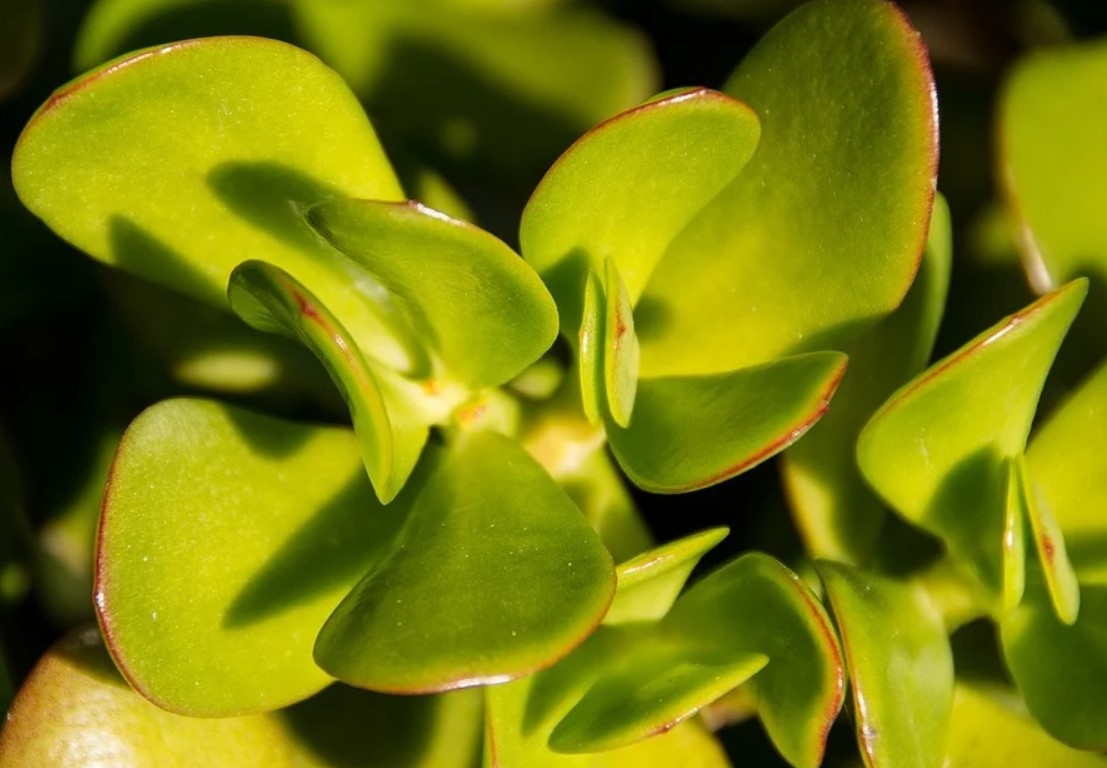
Now, let’s explore how to care for your Jade plant the right way, starting with its light requirements.
Succulents like Jade plants thrive in bright, indirect light. They prefer exposure to natural sunlight for at least 6 hours daily but should be kept safe from intense, direct sun rays to prevent leaf burn.
Yes, a Jade plant can live in low-light conditions provided it is a mature plant (at least 10 years old). You also need to adjust your Jade gradually to dimmer light exposure to avoid stressing the plant.
Yes, Jade plants can suffer from overexposure to direct sunlight, so you should protect them from the harsh rays of the hot sun in the summer. Otherwise, brown spots on their leaves - sure sign of sunburn, will be the most likely result.
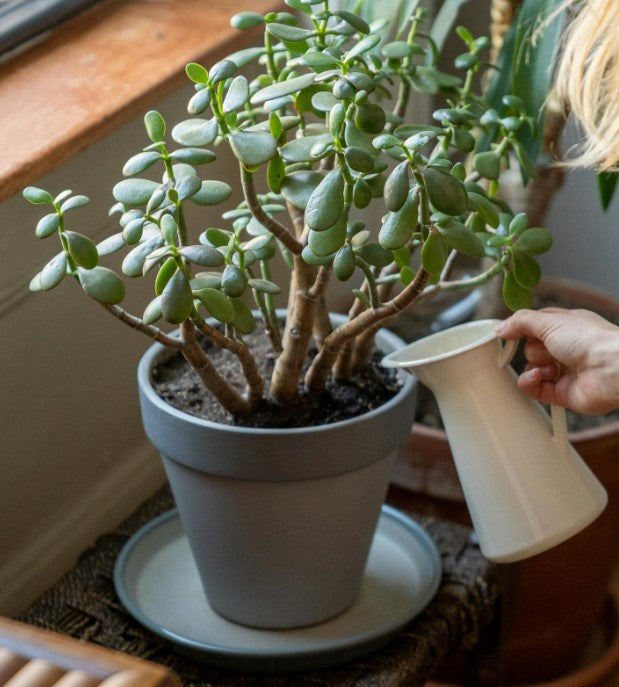
There are mainly three ways to water a Jade plant, namely water over the soil, bottom watering, and a water bath. All these techniques work equally well, and you can alternate between them to meet your Jade’s watering needs in the best possible way.
Water your Jade plant when the top couple of inches of the soil feel dry to the touch. Just stick your finger to check and hydrate the plant if necessary. Indoors, this will mean watering the plant once every 2 to 3 weeks. Of course, adjust the frequency, based on the temperature and humidity in your home.
The best way to know if your Jade plant needs water is by touching the top of the soil. If it feels dry, you probably need to quench its thirst. Also, watch for signs, such as wilting leaves and a generally unhappy-looking plant.
These drought-tolerant plants can go without water for several weeks. Still, avoid underwatering them (leaving them dry for more than 2 weeks) to prevent leaf issues and stunted growth.
If you’re wondering about the temperatures, in which a Jade plant thrives, 60°F to 77°F is the ideal range. Slight fluctuations are acceptable for this low-maintenance plant, but cold drafts are a strict no.
Jade plants prefer consistent humidity of 30-50%. They can tolerate slightly higher levels for a short period. Overly humid environments can lead to curling leaves in Jade plants.
Misting your Jade should be done only in the winter as a substitute for watering the plant. This will keep it hydrated just enough without the risk of overwatering your plant.
In the summer, your Jade plant doesn’t need any extra humidity.
Jade plants grow well in a soil mix consisting of sand, regular potting soil, and perlite. This composition makes the soil nutrient-rich and improves drainage, too.
To feed this tropical plant, use a balanced, water-soluble fertilizer with an N-P-K (Nitrogen-Phosphorus-Potassium) ratio of 10-10-10 or 20-20-20. Don’t forget to dilute it to half-strength and apply it every other month in the growing season.
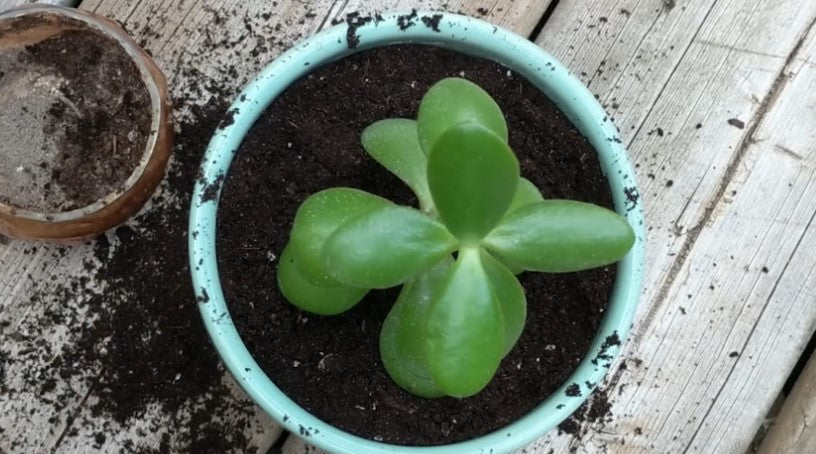
Has your Jade plant stopped growing? Is it looking wobbly, pale, and unhappy? Are its roots growing out of the pot through the drainage holes? If so, it needs repotting!
Every indoor plant needs repotting at some time and for the reasons mentioned above. Jade plants are no exception to this. The best time to repot them is during their active growing period, in early spring or summer. This is the golden time to repot a Jade plant, as it can quickly recover from potential transplant shock and get used to its new pot.
Below is a video tutorial on how to repot a Jade.
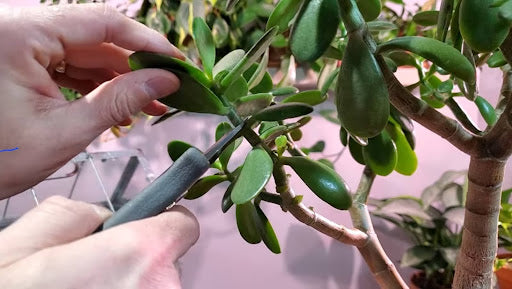
Pruning is a key aspect of Jade plant care. This is because if left untrimmed for long, your green companion will not only become leggy but may bend or break due to its heavy top.
Whether you decide to do it once a year or as and when required to maintain its shape, the best time to prune your Jade plant is from spring to early summer when it experiences vigorous growth.
Follow these steps to prune a Jade plant the right way:
Remember, Jade plants are notorious for their slow growth. Thus, it’ll take several days to weeks for your plant to grow bushier.
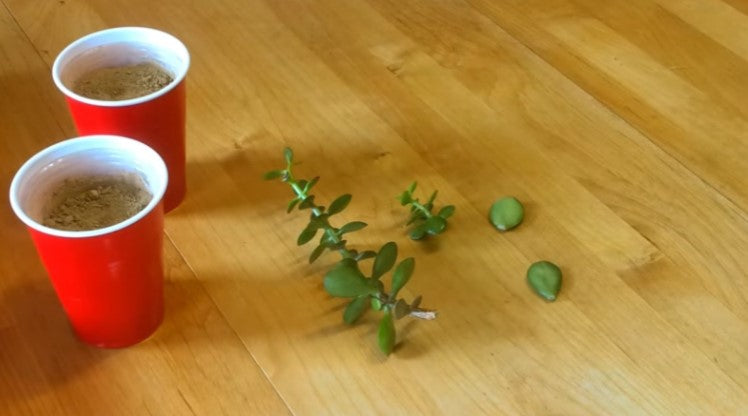
To propagate a Jade plant, whether to share it as a gift or to expand your greenery, it’s best to use a stem cutting or a leaf and root it in soil.
Below is a brief description of each technique:
To propagate a Jade plant, use sharp, sterilized scissors or shears to cut a 3- to 4-inch long stem at the base carefully. You can remove a few leaves from this stem. Keep it aside for some time to dry and form a callus. Otherwise, the stem would be susceptible to disease.
Layer a potting mixture of half and half perlite and succulent soil in a pot with drainage holes, and insert the stem 1 to 2 inches deep. Wait for 6 to 8 weeks for roots to appear and take care of the seedlings by keeping them hydrated in a warm spot.
For this method, pluck or cut some leaves from the plant’s stem. Ensure they have a little pointed bit, otherwise, they may fail to root. Lightly dip the end of these leaves in a rooting hormone.
Next, prepare a saucer or container filled with well-draining soil, and lay your leaves right over it. You don’t need to water the soil. Instead, regular misting is enough to keep the growing medium moist. Keep your leaf cuttings away from direct sunlight for a few weeks, and wait for the roots to emerge. Once you notice the roots showing, transplant each cutting into individual small pots.
Yes, you can root Jade plant cuttings in water. This method will work for stem cuttings only, as leaf cuttings will rot, due to the challenge of keeping them upright in the water. On that note, soil propagation has proven more reliable when it comes to multiplying your Jade plant. Stem cuttings might root in the water quicker, however, the seedlings often struggle to thrive once transplanted.
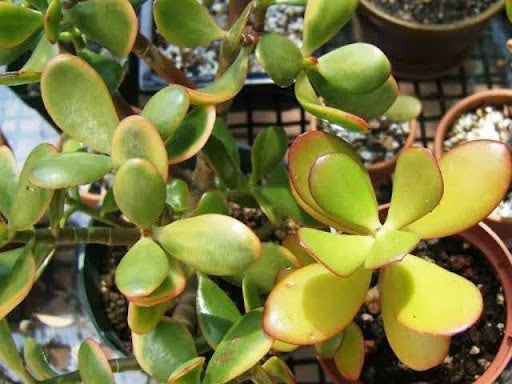
Jade plants may suffer from a few common problems, due to a variety of reasons.
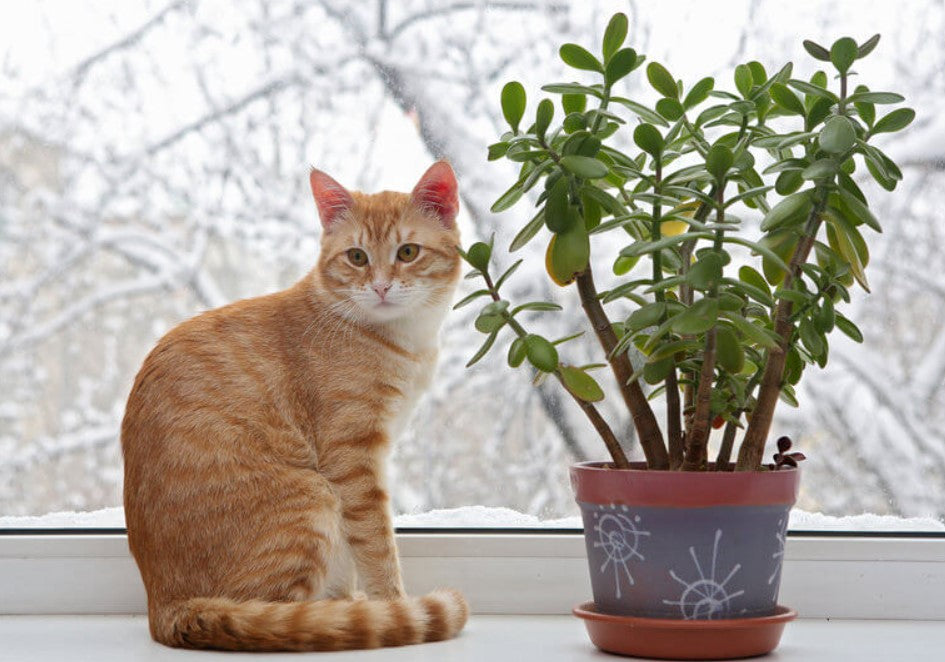
Almost every known Jade plant variety is believed to be toxic for both pets and humans, as explained below.
Yes, a Jade plant is toxic to cats and dogs. It can trigger some mild to moderate symptoms, like lethargy, weakness, and vomiting, if your pet ingests any part of the plant. Hence, it’s a good idea to keep this plant out of your pet's reach and seek veterinary attention immediately if you suspect they have nibbled on it.
Yes, a Jade plant is toxic to humans, too. It contains a compound called Bufadienolide, which can cause symptoms, such as vomiting, diarrhea, and, in severe cases, lethargy or slowed heart rate. Hence, it’s crucial to keep a Jade plant away from young children, toddlers, and babies.
A: Yes, you can accidentally overwater your Jade plant. Being succulents, they are adapted to low-water environments. If watered too frequently, the plants can suffer from root rot, which will lead to leaf issues.
A: A Jade plant roots better in soil. You may not get the desired results by trying to propagate it in water. It will still root but the plant may fail to grow and develop once repotted.
A: The quickest and easiest way to kill Jade plants or any succulent is by overwatering them. Hence, refrain from watering them too frequently.
A: Gently pull your Jade plant (if it’s still young) out from its pot and brush away the soil to see its roots. If the roots are firm and light-colored, they are healthy. On the other hand, if they appear mushy, dark-colored, and emit a foul odor, it’s probably a case of root rot. Also, root rot can be identified by checking the plant’s leaves. Yellowing and wilting leaves are often a sign of root rot.
A: Jade plants don’t like small pots. They dislike large pots, too. A pot that’s neither too small nor too big is just perfect for them.

To properly care for a Jade plant and maintain its aesthetics, plenty of sunlight, well-draining soil, and occasional watering are crucial. The only drawback of a Jade plant lies in its toxicity to pets and the potential harm that can cause to young children. That’s why a Money tree and Chinese Money plant are ideal pet-safe and kids-friendly alternatives. These tropical plants are not only lucky, according to Feng Shui, but also non-toxic to cats, dogs, and humans.
And if plant safety is not an issue in your household, consider growing complementary plant varieties, like snake plants and ZZ plants, with your Crassula ovata to enhance your indoor garden.